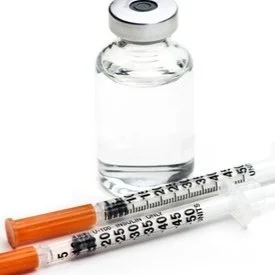
Weight Loss Injections
What is semaglutide?
Semaglutide is known as a GLP-1 inhibitor. It is used along with a healthy diet and exercise to regulate blood sugar and suppress your appetite.
How is it administered? Semaglutide is administered as a subcutaneous injection, under the skin. This is to be done weekly in your abdomen or the back of your arm.
What is a titration? All patients will start at the lowest dose. The dosage will typically be increased every 4-6 weeks, at your consult, but your provider may choose to do otherwise depending on your weight, appetite, etc.
Are there side effects? All medications and treatments have side effects and potential complications. The most common side effects with semaglutide are GI issues, such as nausea, diarrhea, vomiting, or cramping. Other side effects include dizziness, fatigue, and headaches. These should subside 1-2 days after your injection. All side effects and possible complications will be discussed before signing consent, during your consult.
Is a consult required? Yes. All states require a consult, also known as a good faith exam, which will allow the provider to ensure you are receiving the best treatment for YOU and there are not any contraindications of receiving the treatment. Depending on the treatment, most consults will be completed once per year or if there is a change with the patient or plan of care. With weight loss injections, these will be completed monthly to ensure proper titration of the medication. You may also be required to obtain labs before starting this medication.
What are the contraindications for semaglutide? Those with a history of thyroid cancer, gallstones, pancreatitis, and multiple endocrine neoplasia syndrome should avoid GLP-1 inhibitors. Patients who are planning to become pregnant should stop injections a minimum of 2 months before trying to conceive.
Can I bring a clearance letter from my specialist stating I can be prescribed semaglutide? Yes, however this does not guarantee a prescription and will be determined at the discretion of the provider.
What is tirzepatide?
Tirzepatide is as a GLP-1/GIP antagonist that is used with exercise and a healthy diet. This medication allows for better blood sugar control, faster gastric emptying, and suppresses your appetite.
How is it administered? Tirzepatide is administered as a subcutaneous injection, under the skin. This is to be done weekly in your abdomen or the back of your arm.
What is a titration? All patients will start at the lowest dose. The dosage will typically be increased every 4 weeks, at your consult, but your provider may choose to do otherwise depending on your weight, appetite, etc.
Are there side effects? All medications and treatments have side effects and potential complications. The most common side effects with tirzepetide are GI issues, such as nausea, diarrhea, vomiting, or cramping. Other side effects include dizziness, fatigue, and headaches. These should subside 1-2 days after your injection. All side effects and possible complications will be discussed before signing consent, during your consult.
Is a consult required? Yes. All states require a consult, also known as a good faith exam, which will allow the provider to ensure you are receiving the best treatment for YOU and there are not any contraindications of receiving the treatment. Depending on the treatment, most consults will be completed once per year or if there is a change with the patient or plan of care. With weight loss injections, these will be completed monthly to ensure proper titration of the medication. You may also be required to obtain labs before starting this medication.
What are the contraindications for tirzepatide? Those with a history of thyroid cancer, gallstones, pancreatitis, and multiple endocrine neoplasia syndrome should avoid this medication. Patients who are planning to become pregnant should stop injections a minimum of 2 months before trying to conceive.
Can I bring a clearance letter from my specialist stating I can be prescribed tirzepatide? Yes, however this does not guarantee a prescription and will be determined at the discretion of the provider.
Unless noted, store unopened medications in the refrigerator at 36-46 degrees. Opened medications are to be stored in a dry area at 60-80 degrees.
Some of your medications may come in a vial. Your dose should be explained with your prescription. Make sure the medication is clear. If you have any questions, reach out to us on your portal.
Gather your supplies- vial, syringe/needle, alcohol swab, and sharps container.
Wash your hands or use sanitizer.
Select your injection site. Use an alcohol swab for 15 seconds on the site you choose. Let it dry for 15 seconds.
The injection should be given in a 45-90 degree angle in your stomach, top of your thigh, or back of your arm. Rotate injection sites every time.
Leave needle in for 2-3 seconds after the medication is injected.
Safely dispose of the needle and materials.


